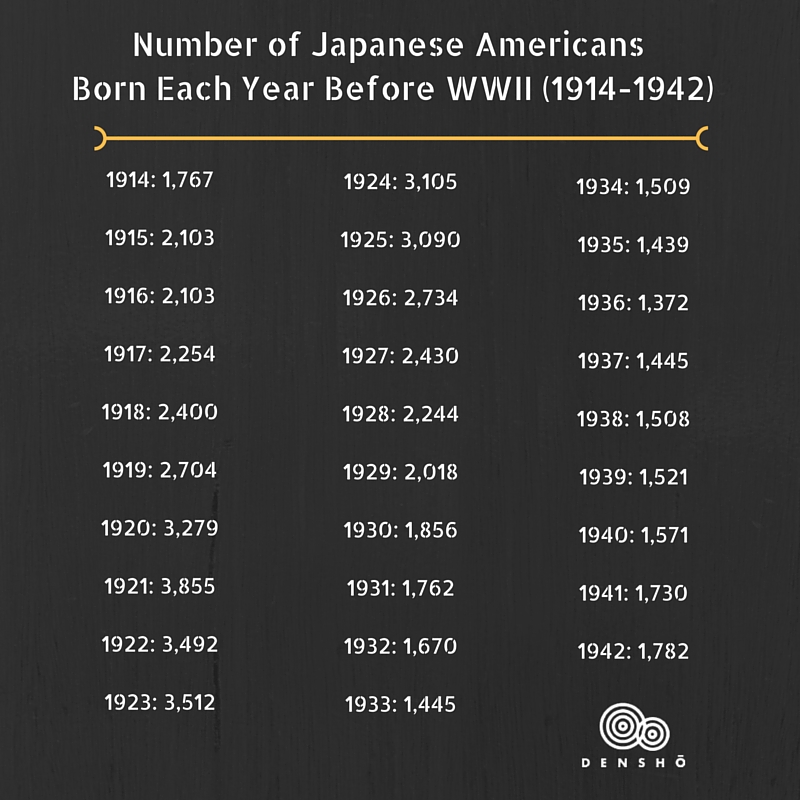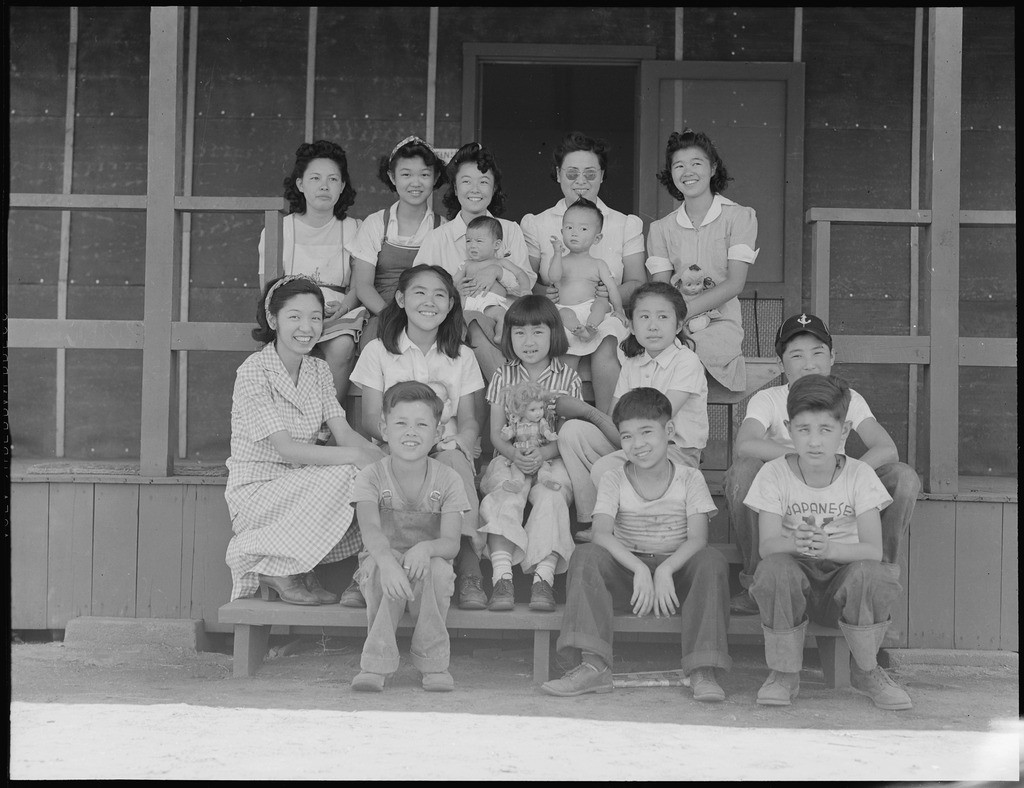June 21, 2016
“Half or more of those removed from the West Coast and incarcerated in concentration camps were children.”
In recent years, this has to have become the most common misstatement of fact about the Japanese American wartime incarceration. It appears all over the place—in print publications, in films and videos, and on various reputable websites. I was reminded of this one most recently when I watched Letters from Camp produced by the Smithsonian Asian Pacific American Center in which Muslim American children and Japanese American former incarcerees read from letters Japanese American children wrote to librarian Clara Breed while imprisoned. Yup, it’s there too. I’m a little puzzled by the ubiquity of this one because (a) it sounds fishy if you know much about the Japanese American community and (b) it is pretty easy to check out.
One of the most often repeated facts about the incarceration is that two-thirds of those held were American citizens. (While this is not literally true either, it is at least relatively close.) That means about one-third were Issei. Because Japanese immigration was cut off in 1924, it is safe to assume that pretty much all Issei were adults by 1942. So for half of all inmates to be children, that would mean that 75% of the citizens would have to be children. If one is at all familiar with the Nisei generation, this just doesn’t sound right.
So what is the real figure? There are different ways to do this. The WRA kept lots of statistics and published a statistical summary titled “The Evacuated People: A Quantitative Description” as part of a series of reports in 1946. A series of tables break down the incarcerated population among various parameters, including age.
Table 37 provides a snapshot of the population as of January 1, 1943, breaking down the population by age in four-year intervals. Of the 110,240 total WRA inmate population at that time, there were 8,110 under age 5; 7,161 aged 5 to 9; 9,537 aged 10 to 14; and 15,484 aged 15–19. Based on these figures, 36.5% of inmates were 19 and under and 22.5% were 14 and under. This doesn’t give us an exact figure as how many were children, but we can see that it is likely about a third.
Another way to do this is to use data from the WRA’s Form 26 database. Early in the incarceration experience, the WRA completed a Form WRA-26 for each inmate. This was a census type form that included basic information such a birthdate, place of birth, address prior to removal, occupation, and so forth. This data was subsequently transferred to punch cards, migrated to magnetic tape, and eventually made into a database. Since 2003, that database has been available online through the National Archives and Records Administration.
Using this database, we can sort by date of birth. I did this for the years 1914 to 1942 and here are the results:

First of all, these data are interesting in showing the general shape of the Nisei generation. You can see the birth of Nisei rising continuously until hitting what we might call “peak Nisei;” in 1921–23, with 11,000 births in those three years. But then from 1923 on, the figure declines for twelve of the next thirteen years, with the number of births falling to just over one-third of the peak figure by 1936. For the next few years, the numbers hold steady and even rise a bit as the first Sansei start coming into play.
Secondly, we can use these figures to generate a somewhat more precise figure for the number of children in camp at the beginning of the incarceration. If we add up the numbers for all born in 1924 or later and divide by the total number, we get a figure of 33.1%, just about a third. This figure would represent all those who turned 18 in 1942 and thus were children in the legal sense for at least some portion of 1942. So I think it would be accurate to say that about one-third of the inmates were children.
Now, over time, the demographics of the concentration camp population changed. Encouraged to leave by the WRA, thousands of “loyal” Japanese Americans left camp starting in the fall of 1942 for jobs, college, and military service and the rate increased when the West Coast exclusion zone was opened to Japanese Americans at the beginning of 1945. With more and more of the able bodied adults leaving camp, those still left in the camps as the war neared its end tended to be Issei and families with young children. Does the percentage of children in the camps start to approach the 50% figure later in the incarceration?
Though we don’t have definitive statistics on this, it appears that the answer is no. In “The Evacuated People,” the final population chart breaks down the population as of July 1, 1945. At this point in time, the total population is 63,857 compared to 110,240 on January 1, 1943, meaning that 46,653 (42.3%) had left camp since then. But interestingly, the percentage of young people didn’t change all that much. The under 19 percentage rose just a point, to 37.6%, while the under 14 percentage rose a bit more, to 27.8%. Again, this is not a precise figure of the number of “children,” but it is clear that that number is nowhere near the 50% mark, even towards the end of the war.
That these figures didn’t rise much was surprising to me, given my perception of the camp population as the camps closed. After all, the vast majority of those 46,653 who left camp were surely adults, which would seem to mean that a higher percentage of those left behind would be children. Another look at the birth date table, though, provides the answer to what likely happened. Given that the birth rate fell continuously from 1923 on as we’ve seen, the largest group of children in 1942 were older children: there were more eighteen year olds than 17 year olds, more 17 years olds than 16 year olds, more 16 year olds than 15 year olds, and so forth. This large group of 15 to 18 year olds in 1942 became 18 to 21 year olds in 1945: precisely the group that was most likely to leave, whether for jobs, college, or military service. Thus, a high percentage of the children of 1942 were likely among the adults who left camp prior to the camps closing in 1945 and is likely the reason the percentage of children in the camps didn’t rise all that much over the course of the war.
So I think we can safely say that children did not at any time make up half of the incarcerated population and that anytime you see this statement, you can replace the “half” with “one-third.”
—
By Brian Niiya, Densho Content Director
[Header photo: Orphans at Manzanar Children’s Village, July 1, 1942]
